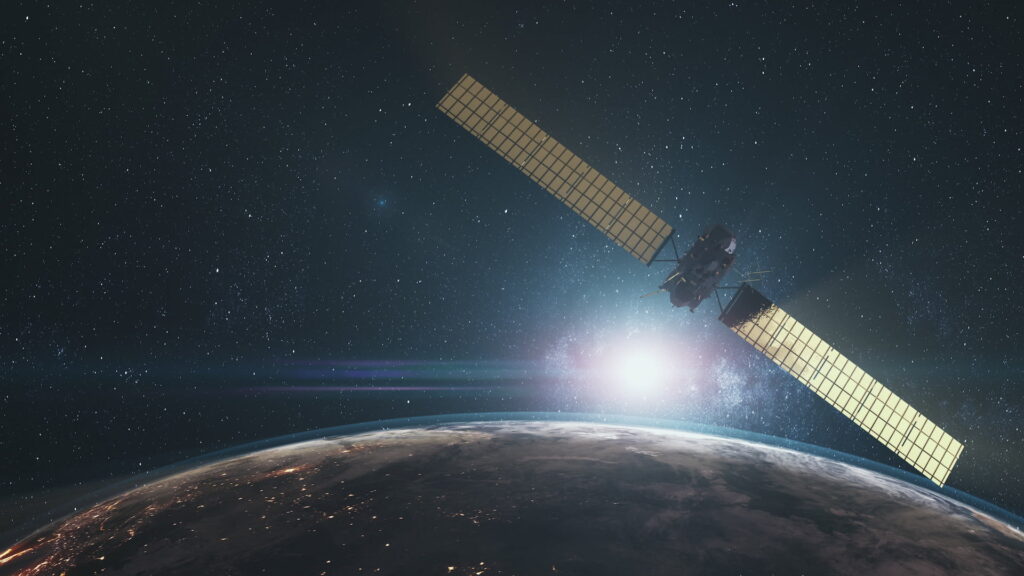
In the pursuit of a truly global, seamless 6G network, the ETHER project is pushing the boundaries of integrated terrestrial and non-terrestrial networks. One of the project’s key innovations lies in its ability to harmonize low Earth orbit (LEO) satellites with terrestrial infrastructure, resulting in a 3D multilayered architecture that promises energy and cost efficiency alongside ubiquitous connectivity.
One of the most exciting aspects of ETHER’s vision is being demonstrated through one of the project’s use cases that is developing Flexible Payload-Enabled Service Provisioning for Delay-Tolerant IoT Applications. This demonstration, led by project partner I2CAT, showcases how flexible payload technology in LEO satellites can provide reliable IoT connectivity, even in the most remote regions.
Hard-to-Reach No More: Ubiquitous Connectivity from Above
IoT applications are rapidly transforming industries like agriculture, environmental monitoring, wildlife conservation, and asset tracking. Yet, one fundamental challenge remains: continuous connectivity in remote and hard-to-reach areas. Traditional cellular networks struggle to maintain coverage in these locations, and deploying ground-based infrastructure can be costly and impractical.
To bridge this gap, ETHER is leveraging LEO satellite constellations equipped with flexible payloads. These payloads enable satellites to dynamically allocate resources and provide NB-IoT (Narrowband IoT) services on demand. Unlike conventional satellites that are restricted to fixed functionalities, the flexible payload technology allows for in-orbit reconfiguration, making the system adaptive to changing demands and mission requirements.

The Power of Semantics and Delay-Tolerant Architecture
Another key aspect of this demo is its incorporation of semantics-aware information handling algorithms. These algorithms significantly reduce the volume of transmitted data, thereby enhancing energy efficiency without compromising the relevance and timeliness of the information.
By focusing on Age of Information (AoI) and Version AoI (VAoI) metrics, the system ensures that IoT data is transmitted only when it holds significant value. This strategy not only minimizes energy consumption on battery-powered devices but also reduces transmission redundancy, making it ideal for delay-tolerant applications where real-time data is not critical.
Flexible Payloads: The Backbone of Satellite Service Provisioning
The backbone of this use case is the flexible payload technology, developed as part of ETHER’s Innovation Technology T-4. These regenerative payloads, built on the Xilinx UltraScale+ FPGA SoC, support real-time reconfiguration and local data processing, which is crucial for optimizing satellite resources and maintaining service continuity.
Furthermore, the payloads utilise Kubernetes-based orchestration to manage services on the go, allowing for rapid deployment of new functions as satellites pass over targeted areas. This capability is critical in environments where satellites must accommodate diverse service types, including both software-based and hardware-accelerated applications.
Leveraging Store-and-Forward Capabilities
In sparse LEO constellations, continuous connectivity between satellites and ground stations is not always possible. To address this challenge, ETHER implements a store-and-forward (S&F) architecture that enables global coverage when continuous end-to-end connectivity is not feasible. This approach allows data to be stored locally onboard the satellite and transmitted when a connection becomes available, ensuring that delay-tolerant applications can still receive essential updates.
The inclusion of Horizontal Handover mechanisms also ensures that IoT devices maintain connectivity even as they move between the coverage areas of different satellites. This reduces the likelihood of service interruptions and enhances the overall reliability of the network.
The Bigger Picture: 3D-Multilayered Integration
The demo exemplifies ETHER’s overarching goal of seamlessly integrating terrestrial and non-terrestrial networks through a 3D multilayered architecture. By combining LEO satellite constellations with terrestrial communication systems, the project envisions a unified network that offers:
- Enhanced energy efficiency (targeting 75% improvement over the state-of-the-art)
- Full global coverage
- Seamless service continuity via predictive deployment and handover techniques
- Cost-effective IoT connectivity for delay-tolerant applications
Real-World Impact and Future Prospects
The advancements demonstrated in this use case pave the way for resilient and flexible communication systems that can dynamically respond to real-world demands. From wildlife conservation in remote wilderness areas to agricultural monitoring in vast rural landscapes, the potential applications are vast and varied.
As ETHER continues to develop and validate its innovative solutions, the promise of a truly integrated, global 6G network moves closer to reality. Flexible payload technology, combined with semantic information handling and delay-tolerant architectures, holds the key to unlocking a new era of connectivity — one where no device or location is left behind.
Stay tuned for more updates on ETHER’s validation activities with our upcoming videos and in-person demo exhibitions!
